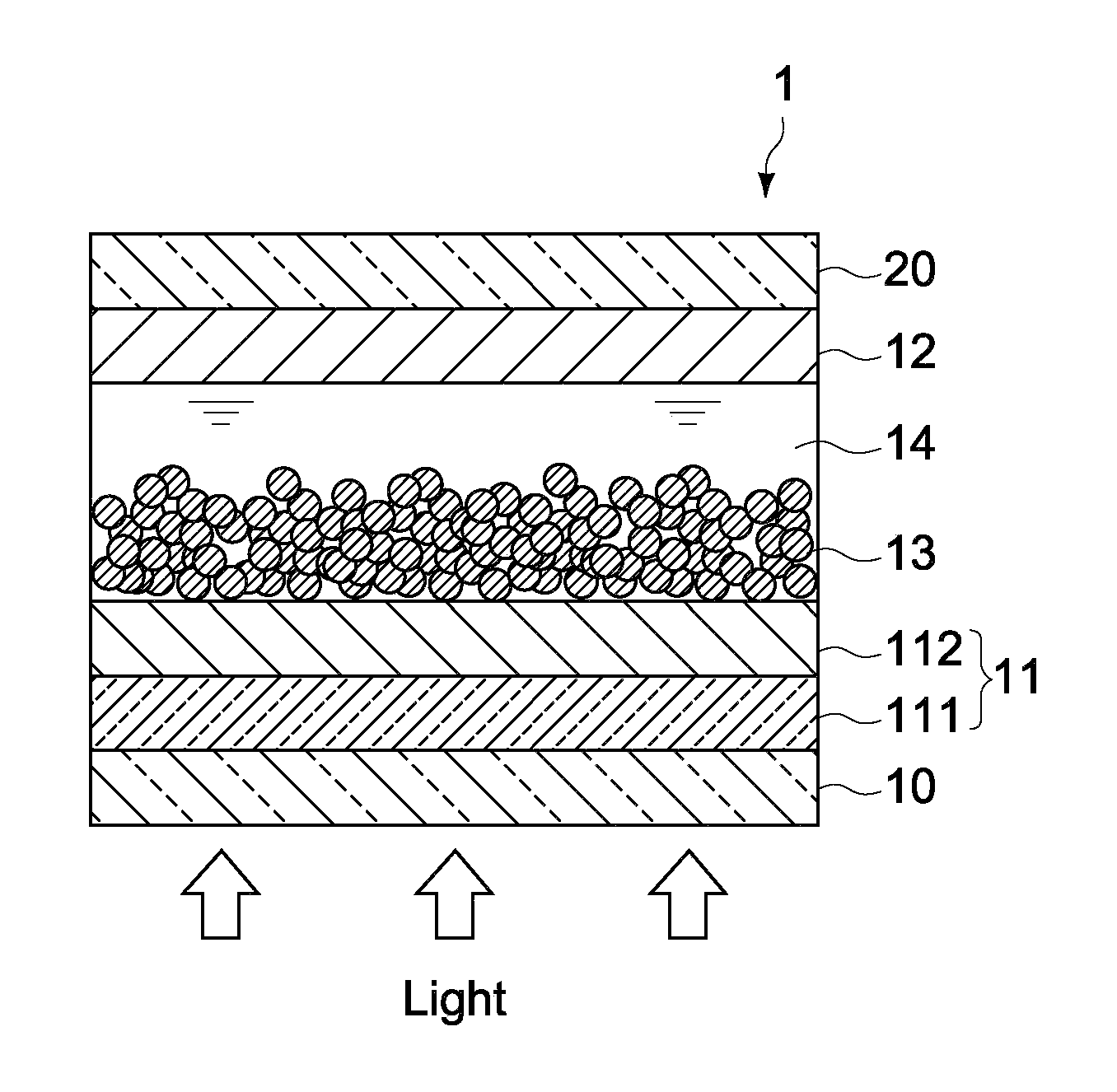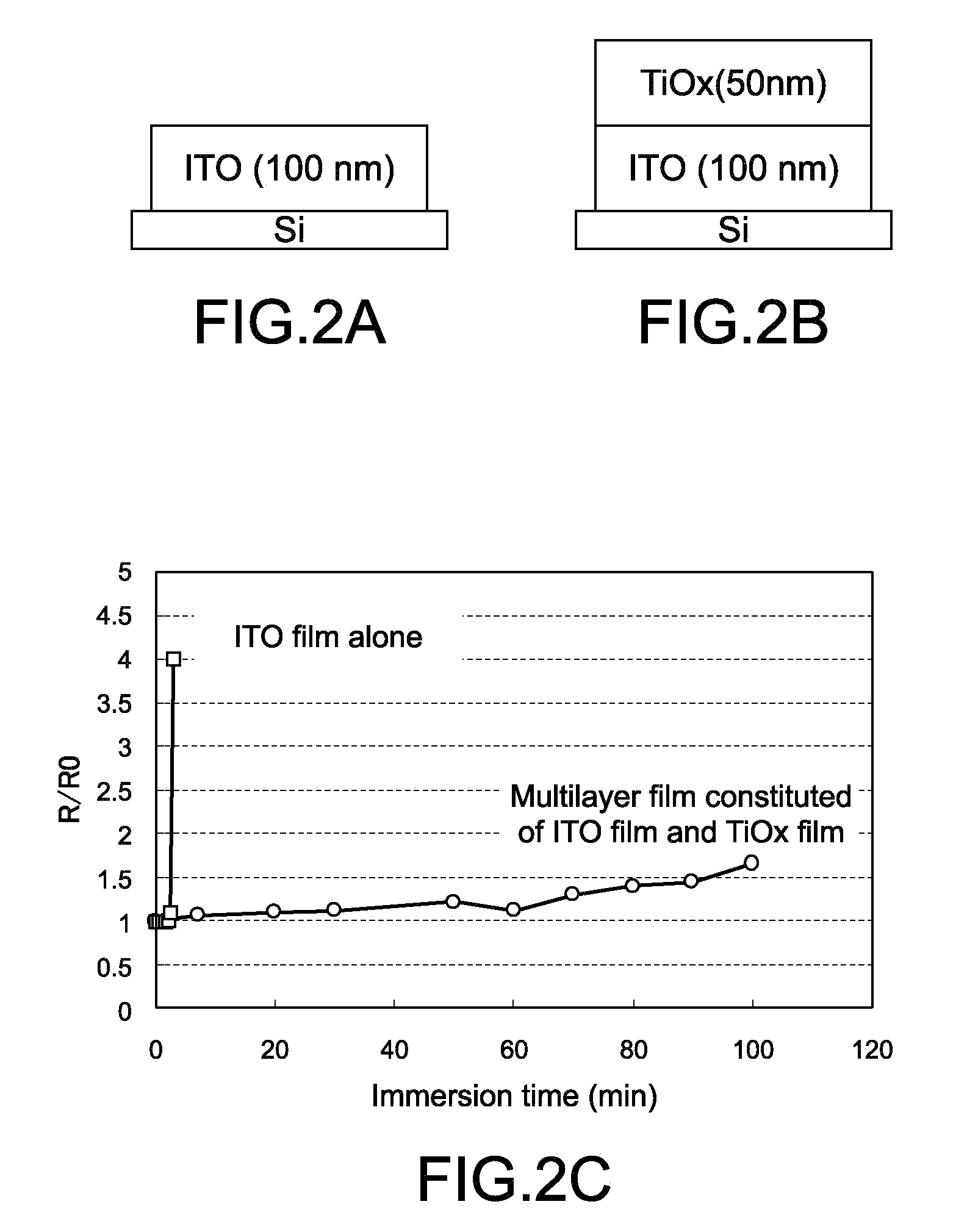Transparent conductive film and photoelectric converion element
a technology of transparent conductive film and converion element, which is applied in the direction of oxide conductors, conductors, non-metal conductors, etc., can solve the problems of limiting achieve the improvement of incident photon-to-current conversion efficiency, conductivity, and sufficient durability
- Summary
- Abstract
- Description
- Claims
- Application Information
AI Technical Summary
Benefits of technology
Problems solved by technology
Method used
Image
Examples
first embodiment
Photoelectric Conversion Element
[0029]FIG. 1 is a schematic cross-sectional diagram of a photoelectric conversion element according to a first embodiment of the present invention. Hereinafter, a photoelectric conversion element 1 of this embodiment will be described.
[0030]The photoelectric conversion element 1 of this embodiment is constituted of a dye-sensitized solar cell. The photoelectric conversion element 1 includes a negative electrode 11 as a collective electrode, a positive electrode 12 as an antipole, an oxide semiconductor layer 13, and an electrolyte layer 14. The negative electrode 11 and the positive electrode 12 are connected to a negative electrode and a positive electrode of an external circuit (load) (not shown). The oxide semiconductor layer 13 is in contact with the negative electrode 11 and formed of a porous titanium oxide. The oxide semiconductor layer 13 supports a pigment whose electrons are excited by visible light irradiated onto the pigment, for example. ...
second embodiment
[0054]FIG. 3 is a schematic cross-sectional diagram of a photoelectric conversion element according to a second embodiment of the present invention. Portions that correspond to those of the first embodiment above in the figure are denoted by the same reference numerals, and detailed descriptions thereof will be omitted.
[0055]In a photoelectric conversion element 2 of this embodiment, a negative electrode 21 differs from that of the first embodiment and includes a multilayer structure constituted of the first conductor layer 111, the second conductor layer 112, and a third conductor layer 113. The third conductor layer 113 is provided inside the first conductor layer 111 and has a specific resistance (third specific resistance) smaller than that of the first conductor layer 111. Specifically, the third conductor layer 113 is constituted of a metal wiring of silver (Ag), an alloy thereof, and the like, though the metal type is not limited thereto. Alternatively, conductive materials o...
PUM
| Property | Measurement | Unit |
|---|---|---|
| specific resistance | aaaaa | aaaaa |
| thickness | aaaaa | aaaaa |
| thickness | aaaaa | aaaaa |
Abstract
Description
Claims
Application Information
 Login to View More
Login to View More - R&D
- Intellectual Property
- Life Sciences
- Materials
- Tech Scout
- Unparalleled Data Quality
- Higher Quality Content
- 60% Fewer Hallucinations
Browse by: Latest US Patents, China's latest patents, Technical Efficacy Thesaurus, Application Domain, Technology Topic, Popular Technical Reports.
© 2025 PatSnap. All rights reserved.Legal|Privacy policy|Modern Slavery Act Transparency Statement|Sitemap|About US| Contact US: help@patsnap.com



